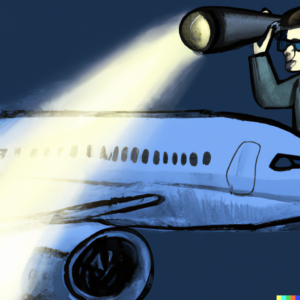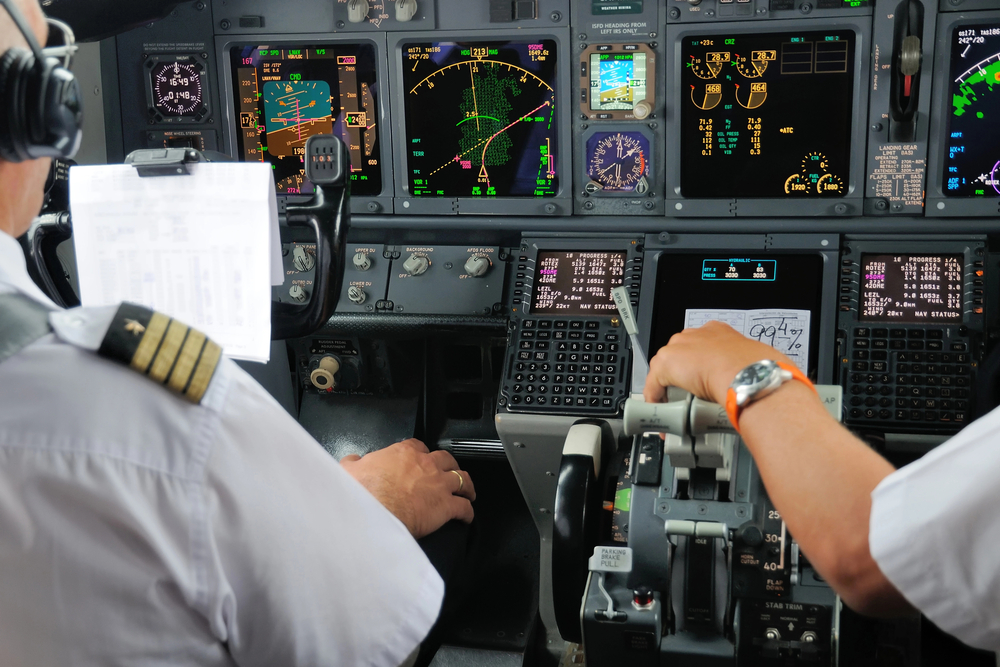Oh Boeing, what a mess you’ve gotten yourself into now.
The 737 series of aircraft is venerable; It is the number one selling aircraft in the world, outselling its Airbus competitor the A32x series of aircraft…but not by much (Boeing has delivered 11,000 737 series airframes while Airbus has delivered around 10,000 A32x series). I fly several of the 737s: the 737-700, 737-800, and 737-8MAX. These are not the same aircraft as the 737-9MAX that suffered an exit door blowout while airborne. While there are many similarities between the series of aircraft, to compare different models is a disservice: in the context of aviation, model combinations of aircraft capabilities, performance, cabin layout, or minor avionics changes. Also, I don’t want to weigh in on the technical aspects of what happened. The National Transportation Safety Board, Boeing, the Federal Aviation Administration (FAA), and other entities have not finished their investigations, and I don’t want to pontificate before all the facts are in.
What I do want to discuss, dear reader, is how I see forces at play. Boeing is a juggernaut: Billions in military contracts and airline deliveries. Former Presidents Obama and Trump have both touted their role as “salesman-in-chief” for the plane maker. Indeed, the US federal government authorizing sale of Boeing-manufactured fighter jets to Turkey in response to Turkey’s approval of Sweden as a NATO ally shows that the private corporation is as much a part of the US government policy as any government agency.
The Federal Aviation Administration is responsible for oversight for the design, manufacture and certification of the aircraft in the US, as well as certification of pilots, Air Traffic Controllers, mechanics, flight attendants, instructors, dispatchers, airports…well, you get the idea (and I haven’t even scratched the surface of the breadth of their responsibility). There is simply no feasible way they can hire enough people to fully maintain their congressional mandate to a reasonable degree. Enter the Designated Representative. Designated Representatives are individuals employed by an organization such as Boeing or an airline but deputized by the FAA to act as an agency representative. Their role is to provide oversight, reporting both to the FAA and the management structure, to ensure compliance.
“But wait!” I hear you cry, “Doesn’t that translate to regulatory capture? How can they provide oversight if they’re being paid by the company?” Designated Representatives are required to abide by a strict code of ethics. There is a lengthy vetting process conducted by the FAA. Beyond staffing and budgetary concerns, there is another significant advantage to the regulator: that Designated Representative is often present when new technology or engineering concepts are tested. They are, much more than a bureaucrat sitting in a government-beige cubicle farm, a subject-matter expert. By the time an inspector could be scheduled, deployed, trained to a level of competence, and then make a determination of regulatory compliance, the aforementioned technology could have changed. The delay also potentially exposes the manufacturer to industrial espionage or loss of intellectual property. At least, that is how the Designated Representative review process works in theory and in practice it works darn well too.
Unless…
In the safety science world, we consider members of the aviation industry High Reliability Organizations. This means that the chances of an accident happening are astronomically small, but when they do happen, there are catastrophic consequences. Every airline knows they are only one or two accidents away from being relegated to the dust heap of history. Don’t believe me? Ask Pan Am, PSA, ValuJet, or Colgan Airways. We take our safety very seriously. It is ingrained in our culture. That’s where Boeing has seen a decline: Its culture. Boeing employees felt pressure to push a product to the line and, as admitted by Boeing in court documents, used their Designated Representatives to mislead the FAA, resulting in a $2.5 billion dollar fine in 2021 and a settlement of fraud allegations with the SEC in 2022. Their goal was to market an airplane that required no additional training for pilots currently flying the 737-series therefore saving their customers a boatload in training costs and helping to undercut Airbus who had been taking Boeing’s market share. Even if Boeing’s executives were publicly announcing their enshrinement of safety, the culture of apathy towards Boeing’s ethical and legal responsibilities thrived under their leadership.

How does Boeing fix its cultural problem? Some folks today are calling for additional oversight. I think that would be like handing a blind man a flashlight. As airplanes become more complex, supply chains get longer, and the demand for capability changes, the FAA could not react fast enough to allow Boeing to maintain a competitive edge. There is a system already in place, but if it is not utilized correctly and ethically, adding additional oversight does nothing. If anything, it would increase noncompliance as individuals involved in the process see the additional measures as obstructive and unwieldy. Boeing needs to change their culture. In High Reliability Organizations, the accountable executive for safety is the CEO. Boeing needs to make this kind of commitment: enshrining a robust safety culture at its highest level. CEO Dave Calhoun seems, at least publicly, to be embracing this idea of highest-level safety commitment (which, ironically, Boeing helped to create). After the MAX9 blowout, he immediately ordered inspections of the aircraft, acting even before the FAA and affected airlines, as opposed to the MAX8 crashes in 2019 which took several weeks and additional accidents before the aircraft model was inspected. Calhoun has vowed to “go slow” and investigate every avenue towards a holistic improvement of Boeing’s culture. It takes a long time to turn a ship as big as Boeing, but they are nice words. Only time will tell.
My only wish is that there was a larger incentive for Boeing to right itself. Yes, it has been tarnished in the public view, but our attention spans are short. Plus, with billions in federal contracts and the chief executive of the nation as their biggest cheerleader, they have got plenty of support. Not that Boeing is too big to fail, but the consequences take longer to present themselves. Boy, if only there was a large, empirical body of knowledge that studied how resources are distributed based on incentives and various forces…
Dennis Murphy is a professional airline pilot with a background in aviation safety, accident investigation, and causality. When he’s not flying 737s, he enjoys the company of his wife, their dogs, cats, and bees.


READER COMMENTS
Atanu Dey
Mar 18 2024 at 2:13am
I too wish that there was such a discipline. Oh, wait, I have heard of something called “economics.” Perhaps that’s it. 🙂
Thanks for the excellent article.
Comments are closed.